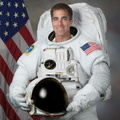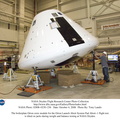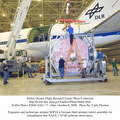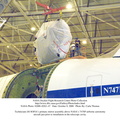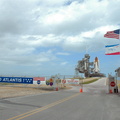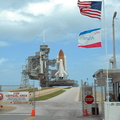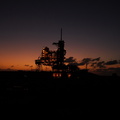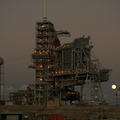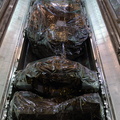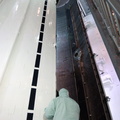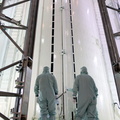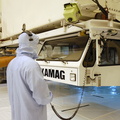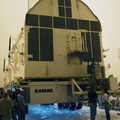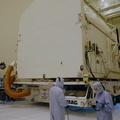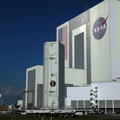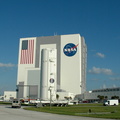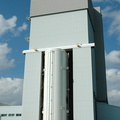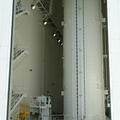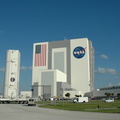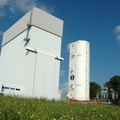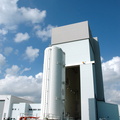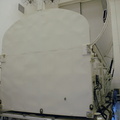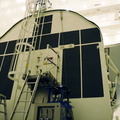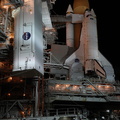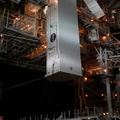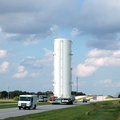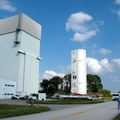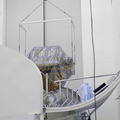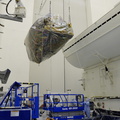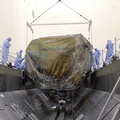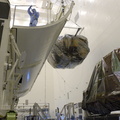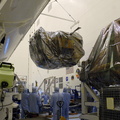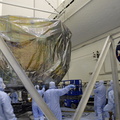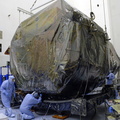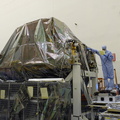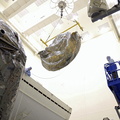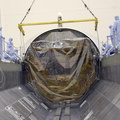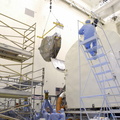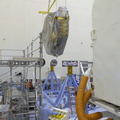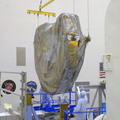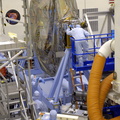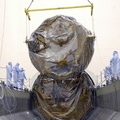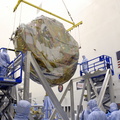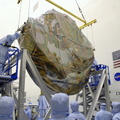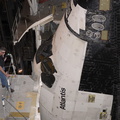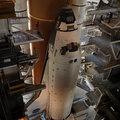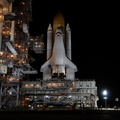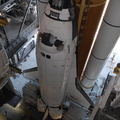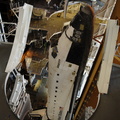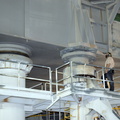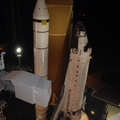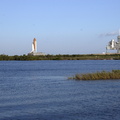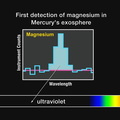
WIKIARCHIVES.SPACE
The Human Spaceflight Archive

To the human eye, Mercury shows little color variation, especially in comparison to a colorful planet like Earth. But when images taken through many color filters are used in combination, differences in the properties of Mercury’s surface can create a strikingly colorful view of the innermost planet. Shown here are two color images of Thakur, named for the Bengali poet, novelist, and Nobel laureate influential in the late 19th and early 20th centuries. The image on the left was produced by combining images from three WAC filters into red, green, and blue channels, as a general representation of the color seen by the human eye (though every person sees color slightly differently, as discussed for the full-planet color images PIA11364). The right image was created by statistically comparing and contrasting images taken through all 11 of the WAC’s narrow-band color filters, which are sensitive to light not only in the visible portion of the spectrum but also to light that the human eye cannot see. This method greatly enhances subtle color differences in the rocks of Mercury’s surface, providing insight into the compositional variations present on Mercury and the geologic processes that created those color differences. Visible on the floor of Thākur crater is the intersection of two ridges, seen here in unprecedented detail for the first time with MESSENGER’s newly obtained images.
Information
- Taken in
- Author
- NASA/Johns Hopkins University Applied Physics Laboratory/Arizona State University/Carnegie Institution of Washington
- Description
-
To the human eye, Mercury shows little color variation, especially in comparison to a colorful planet like Earth. But when images taken through many color filters are used in combination, differences in the properties of Mercury’s surface can create a strikingly colorful view of the innermost planet. Shown here are two color images of Thakur, named for the Bengali poet, novelist, and Nobel laureate influential in the late 19th and early 20th centuries. The image on the left was produced by combining images from three WAC filters into red, green, and blue channels, as a general representation of the color seen by the human eye (though every person sees color slightly differently, as discussed for the full-planet color images PIA11364). The right image was created by statistically comparing and contrasting images taken through all 11 of the WAC’s narrow-band color filters, which are sensitive to light not only in the visible portion of the spectrum but also to light that the human eye cannot see. This method greatly enhances subtle color differences in the rocks of Mercury’s surface, providing insight into the compositional variations present on Mercury and the geologic processes that created those color differences. Visible on the floor of Thākur crater is the intersection of two ridges, seen here in unprecedented detail for the first time with MESSENGER’s newly obtained images.
Date Acquired: October 6, 2008
Image Mission Elapsed Time (MET): 131770496 - 131770546
Instrument: Wide Angle Camera (WAC) of the Mercury Dual Imaging System (MDIS)
Resolution: 460 meters/pixel (0.29 miles/pixel)
Scale: Thākur crater is 118 kilometers in diameter (73 miles)
Spacecraft Altitude: 2,500 kilometers (1,600 miles)
- Created on
- Tuesday 14 October 2008
- Albums
- US SPACE PROGRAM / PROBES / MERCURY / MESSENGER / Annoted/Science
- Source link
- https://photojournal.jpl.nasa.gov
- Visits
- 23
- Rating score
- no rate
- Rate this photo
- License
- Public Domain
- Modified by WikiArchives
- No (original)
- Downloads
- 0
Powered by Piwigo











